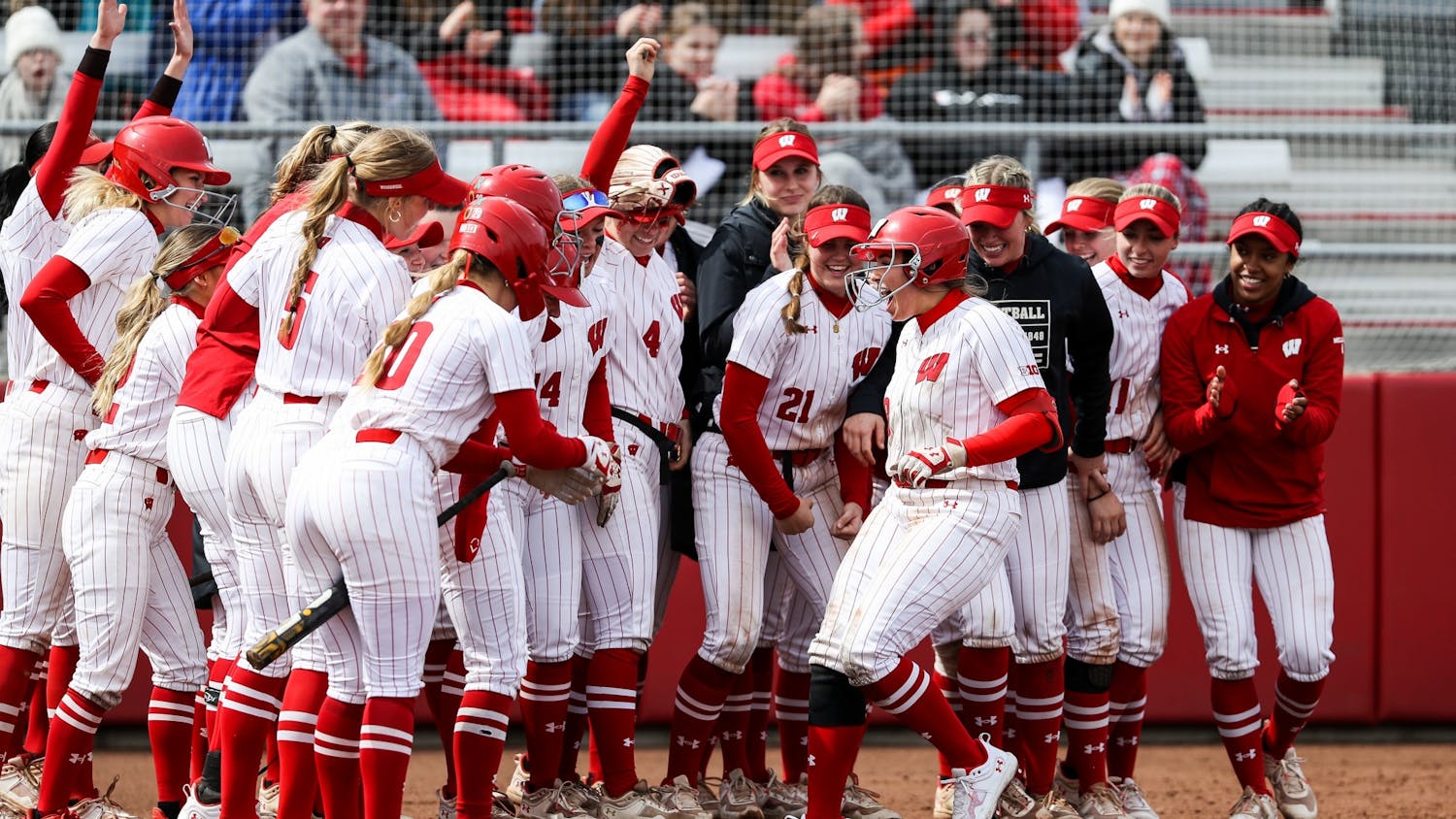The Wisconsin Men’s Hockey team started their season 0-4 after losing their opening two series, one against Big Ten opponent Ohio State and the other against former Western Collegiate Hockey Association rival St. Cloud State. Despite losing their opening four games this year, the team displayed some potential, especially against No. 8 St. Cloud.
Last Friday the Badgers produced a stellar first period, outshooting the Huskies 12-7. Despite failing to score, a 0-0 tie at the first intermission showed promise for the Badgers. Their inconsistency, however, resulted in them allowing three goals in the second period, which led to an eventual 5-1 defeat.
Saturday, the Badgers once again played an admirable first period. In contrast to the first game of the series, the Badgers maintained a higher level of play. Despite a major penalty assessed to junior Ty Smilanic, the Badgers remained competitive. Even in a loss, the Badgers showed they can compete against the top teams in the country.
The scoreboard may not reflect it, but this Wisconsin team has potential. When the Badgers maintain their standard of play for an entire game, they can and will win games. However, Wisconsin does need to make changes to improve in some key areas.
Power Play
The Badgers have opened the season 1-12 on the power play, or a dismal 8.3%. Wisconsin does not need to have the best power play in the nation to find success. They do however, need to find ways to take advantage of more power play opportunities.
Against fundamentally sound teams like St. Cloud and many Big Ten opponents, power play opportunities must be converted at a higher rate. Stronger teams will not provide many opportunities at even strength. Power plays can also shift momentum and provide a necessary spark for a struggling team. Wisconsin needs a spark at this point in their season and improving their power play may provide just that.
Wisconsin maintained possession of the puck for a majority of their power play time during the St. Cloud series but failed to score. While the Wisconsin possession and puck movement looked impressive, the team did not register many quality shots on goal. The Badgers need to take advantage of the space created by their puck movement and challenge goalies.
Taking shots at opposing goalies is not a bad choice for Wisconsin right now. Shooting creates opportunities for rebounds and chaos in front of the goal, and those opportunities will eventually end with the puck in the back of the net. Mathieu De St. Phalle’s goal on Friday night is the perfect example – by putting the puck out front and making a hard play, he put the Badgers on the board.
Defensive zone breakout
Wisconsin has struggled thus far scoring goals – having scored just six goals in four games. The Badgers have also been held to one goal in three of their opening contests. Some of these struggles stem from their defensive zone breakout. Far too often the Badgers turned the puck over at their defensive blue line. Additionally, when the puck was trapped at the Wisconsin blue line, St. Cloud won more battles than Wisconsin to maintain their possession.
The Badgers have a distinct breakout plan, one that may need adjusting. Upon gaining possession, the Wisconsin forwards attempt to skate for stretch passes leaving fewer options for a clean breakout pass. This is a very aggressive system that can provide odd man rushes but also leaves defenses vulnerable to quick counter attacks. The stretch pass favored by Wisconsin also allows opponents to create traps where turnovers are almost always assured.
Another problem the Badgers encountered against the Huskies was the frequency of stretch passes resulting in icing. Icing contributes to defensive and offensive struggles in two main ways — one being the defensive zone face-off following the call creating a cycle if stretch passes continue being used. The second being the inability to make a line change after the call for the offending team. This leads to tired defenders which are susceptible to costly mistakes.
Wisconsin may need to abandon this concept in order to provide options to move up the ice. The stretch pass can still remain an option but should be used more sparingly when opportunities present themselves.
Offensive zone entry
When the Wisconsin breakout produces entry to the offensive zone, the Badgers lack creativity upon entry. Nearly every entrance into the offensive zone followed a predictable pattern. This pattern went as follows: a Wisconsin player would skate the puck in along the boards and skate into the corner followed by a pass attempt to the middle of the ice. Many pass attempts were then either intercepted or swatted away by the defending players.
The predictability of the Wisconsin attack provides another possible reason for the offensive struggles thus far in the season. Knowing what Wisconsin is likely going to do before the game starts provides opposing teams with insight into how they can stop Wisconsin’s offense, which, so far, they have.
Creativity should come with more chemistry and confidence in teammates. Until this chemistry is built, however, the Badgers should be looking into new designs to create offense when they have chances. One possibility is to have the puck carrier stay wide on entry but drive to the goal and try to create a shot. Even if a shot is not created initially, the driving player will force the opposing defenseman into a decision, make a play on the puck or defend a pass. If Wisconsin can force this decision, options will open in front of the goal.
The coaching staff of this Badger team needs to consider changes to the current systems to create a team that maximizes its potential. If the Badgers are able to play to their potential, they could still find some success this year.






